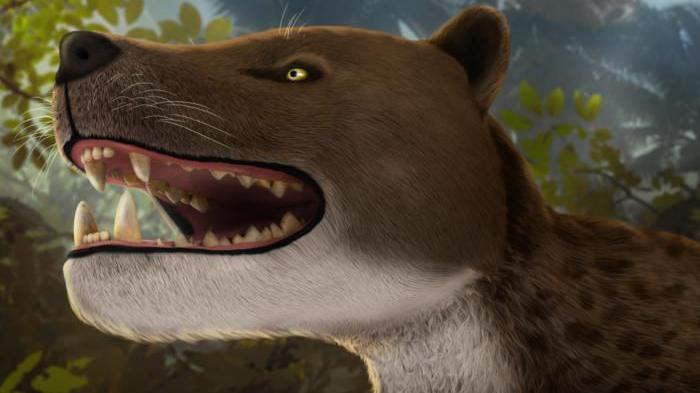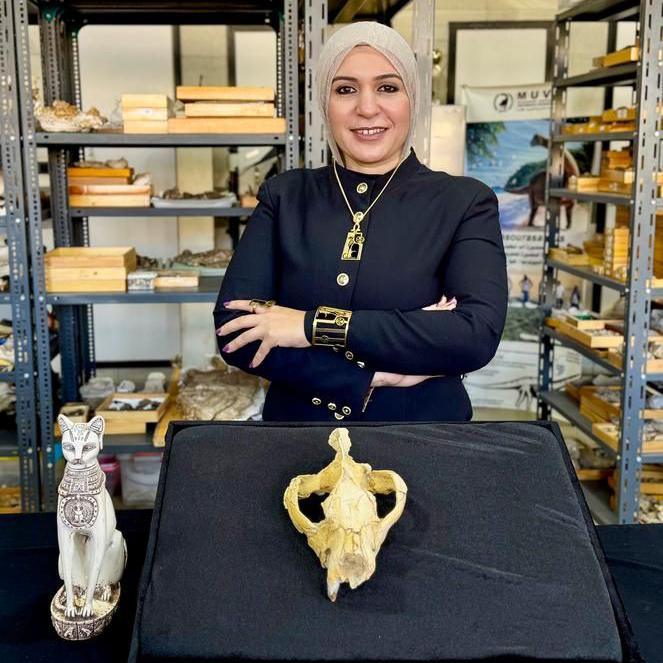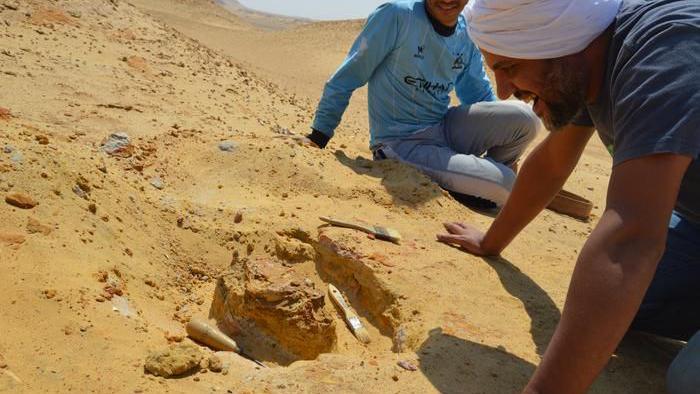Skull of ancient 'fearsome' leopard-like creature discovered

An artists drawing of what the Bastetodon might have looked like
- Published
A team of scientists in Egypt have found a rare ancient skull belonging to a "fearsome" cat-like predator.
The palaeontologists think the skull belongs to a new species of hyaenodonta - which is an extinct deadly predator that lived around 30 million-years ago.
Hyaenodonts had sharp teeth like a hyena, and were around the size of a leopard, hunting primates and early hippos across Africa after the dinosaurs.
The research team - also known as Sallam Lab - named the new species Bastetodon, after the ancient Egyptian cat-headed goddess Bastet, and "-odon" meaning "tooth".
Amazing Earth
- Published2 days ago
- Published6 days ago
- Published20 January

Shorouq Al-Ashqar, the lead author, with the Bastetodon syrtos skull and a Bastet statue.
The skull was discovered in the Fayum Depression, in Egypt, an area where digs have revealed important artifacts over 15 million years of evolutionary history of mammals in Africa.
Speaking about the discovery, palaeontologist and lead author, Shorouq Al-Ashqar, said "For days, the team meticulously excavated layers of rock dating back around 30 million years.
"Just as we were about to conclude our work, a team member spotted something remarkable —a set of large teeth sticking out of the ground.
"His excited shout brought the team together, marking the beginning of an extraordinary discovery: A nearly complete skull of an ancient apex carnivore, a dream for any vertebrate paleontologist," she added.

Professor Sallam, palaeontologist and author of the study during the discovery expedition.
This new discovery also allowed the team to make note of differences in previous discoveries from 120 years ago.
"The discovery of Bastetodon is a significant achievement in understanding the diversity and evolution of hyaenodonts," Shorouq added.
"We are eager to continue our research to unravel the intricate relationships between these ancient predators and their environments over time and across continents."
